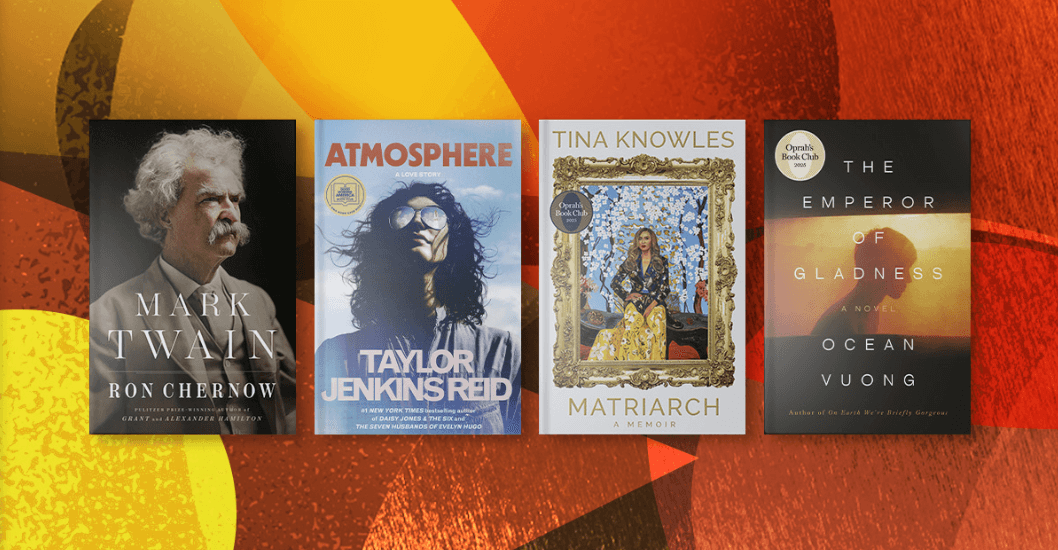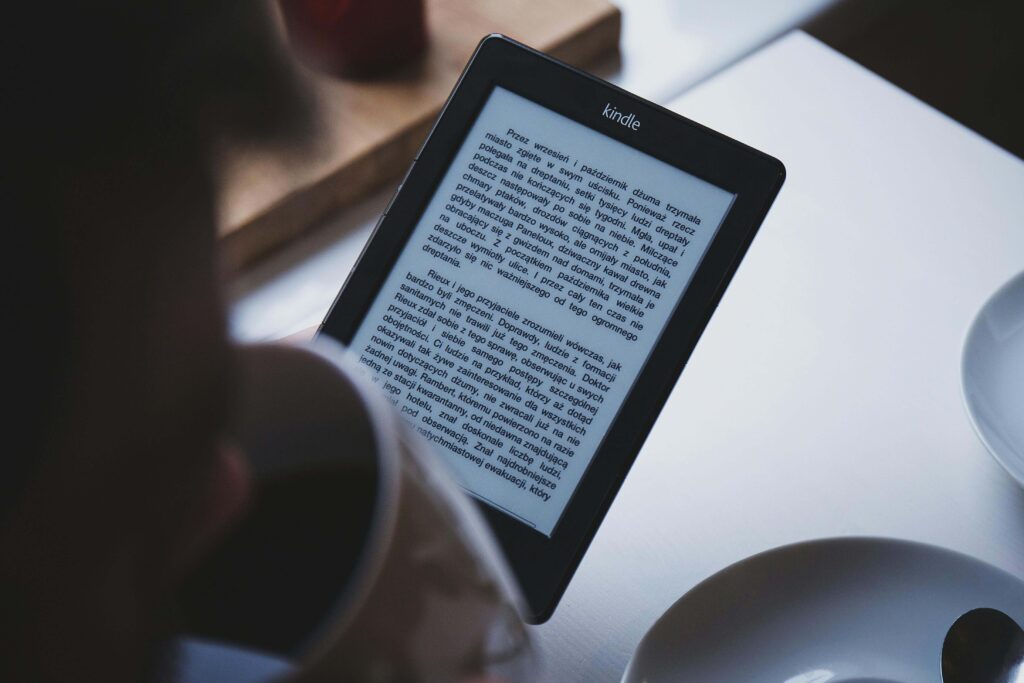
Penguin Random House sits in a league of its own, shaping the literary landscape in ways few publishers can match.
With hundreds of imprints under its wing, it caters to every reading taste, from contemporary bestsellers to timeless classics. Its catalog spans millions of copies sold across more than 100 countries, and it continues to dominate bestseller lists year after year.
In an industry where trends shift quickly, Penguin publishing has mastered the art of balancing heritage with innovation. You’ll find books here that spark cultural conversations, influence public thought, and inspire new generations of readers.
The company’s marketing power ensures that a debut author’s voice can reach the same shelves and audiences as Nobel Prize winners, something that transforms careers overnight.
-
Penguin Random House is the world’s largest trade book publisher with over 300 imprints and a global reach in more than 100 countries.
-
Publishing with Penguin Random House gives authors access to expert editing, marketing support, and prestigious award opportunities.
-
The company’s vast distribution network can fulfill up to 1.8 million books daily, ensuring fast delivery to bookstores, libraries, and online retailers.
-
Authors usually need a literary agent to submit manuscripts, and the process from acquisition to publication can take 18 months or more.
-
Many successful writers combine traditional publishing with Penguin Random House and self-publishing to maximize reach, income, and creative freedom.
I’ve seen how its editorial teams work. They’re meticulous, strategic, and deeply invested in their authors’ success. They’re not just polishing manuscripts; they’re building legacies.
For any writer dreaming of global recognition, the pull of Penguin Random House is both prestige and the promise of having your work amplified on a scale few can offer.
What is Penguin Random House?
Penguin Random House came to life on July 1, 2013, when two giants of the literary world—Penguin Books, founded in 1935, and Random House, founded in 1927—merged their strengths.
That union combined nearly two centuries of publishing experience, creating a powerhouse with a catalog that reaches readers in almost every corner of the globe. Since April 2020, it has been fully owned by Bertelsmann, giving it the resources and stability to operate at an extraordinary scale.
Today, Penguin Random House runs more than 300 imprints across six continents, each with its own editorial voice and market focus. This diversity allows it to publish about 15,000 new titles every year, from debut novels to works by literary legends.
Walking into a bookstore anywhere in the world, there’s a good chance you’ll find a shelf filled with titles from penguin publishing, whether it’s a fast-paced thriller, a deeply researched biography, or a children’s picture book that becomes a household favorite.
I’ve always found it fascinating how this publishing giant manages to preserve the individuality of each imprint while benefiting from the collective strength of the entire group.
It’s like having hundreds of boutique publishers working under one umbrella, each adding its own flavor to a shared global mission, getting remarkable stories into the hands of readers everywhere.
What is Penguin Random House famous for?
Penguin Random House has built a reputation that blends cultural influence with commercial dominance. Its shelves are home to authors who have shaped entire generations, names like George Orwell, Margaret Atwood, Barack Obama, John Grisham, and Chimamanda Ngozi Adichie.
These writers didn’t just sell books; they sparked conversations, influenced policies, and even shifted the way people view the world. The company’s ability to consistently produce titles that resonate on a global scale is why it remains a leader in penguin books publishing.
In 2024 alone, Penguin publishing saw sales soar to around €4.9 billion, with 47 of the top 100 UK bestselling titles carrying its imprint. That kind of performance is the result of sharp editorial choices, strategic marketing, and a deep understanding of what readers want at any given moment.
Its titles regularly sweep major awards like the Pulitzer, the Booker Prize, and the National Book Award, cementing its place as a tastemaker in the literary world.
I’ve seen how a Penguin Random House title can transform an author’s career almost overnight. A book backed by its marketing team gets prime bookstore placement, targeted media coverage, and the kind of visibility most writers dream of.
Whether it’s an epic fantasy that grips millions or a quiet memoir that wins the hearts of critics, this publisher knows how to turn a manuscript into a cultural touchstone.
Is Penguin owned by Random House?
Penguin Books and Random House each had decades of success before joining forces. For most of their history, they competed as separate giants. Penguin was known for its affordable paperbacks and accessible literary style, while Random House was known for its prestige titles and powerhouse author roster.
That dynamic shifted in 2013, when the two merged to create Penguin Random House under the joint ownership of Bertelsmann and Pearson. The deal combined their editorial expertise, marketing resources, and global distribution networks into a single, unmatched publishing entity.
By 2020, Bertelsmann purchased Pearson’s remaining shares, taking full control of the company and making Penguin Random House a wholly owned Bertelsmann subsidiary. This move streamlined decision-making and gave the publisher even greater agility in a rapidly changing book market.

From my perspective, it also removed any lingering confusion for authors and industry insiders about who ultimately steers the company’s direction. Under one clear owner, penguin publishing could operate with a unified vision, something that benefits both the business and the writers it champions.
Who is the CEO of Penguin Random House?
Nihar Malaviya leads Penguin Random House as its CEO, managing operations that span over 300 imprints in 21 countries. His role covers both global and U.S. markets, meaning he’s responsible for shaping the company’s publishing strategy on a scale few executives in the industry experience.
Appointed permanently in September 2023, Malaviya brought with him a strong background in technology, data science, and supply chain innovation, skills that have become essential for modern publishing, where digital platforms and reader analytics can make or break a title’s success.
Under his leadership, penguin publishing has embraced smarter, more efficient ways to connect authors with readers. That includes investing in digital tools to track sales trends, expanding audiobook production, and ensuring the company’s massive logistics network keeps books flowing to shelves around the world without delay.
His tenure also reflects a willingness to take a public stand on important issues. In 2025, Time named Penguin Random House one of the “Most Influential Companies” for its active defense of free expression in the face of growing book bans, a recognition that speaks volumes about how leadership can shape not only business outcomes but also cultural conversations.
From my point of view, Malaviya’s blend of tech expertise and principled leadership is exactly what a publishing house of this scale needs. He’s steering a historic brand into the future while making sure it remains a guardian of storytelling freedom.
What do penguin random houses do?
Penguin Random House operates like a finely tuned creative and business engine, guiding a book from an author’s idea to a finished product in the hands of readers worldwide.
Manuscripts are acquired through a highly selective editorial process, where seasoned editors look for works that have both artistic merit and market potential.
Once acquired, these projects move through rigorous editing, cover design, and interior layout, each step handled by specialists who know how to bring out the best in a story or piece of nonfiction.
Distribution is another area where penguin publishing shows its strength. With an infrastructure capable of fulfilling 1.8 million books per day, the company ensures that its titles reach bookstores, libraries, and online retailers across multiple continents without delays.
This system is supported by advanced logistics technology that tracks inventory and demand in real time, a critical advantage in meeting reader expectations and retailer deadlines.
Beyond getting books into the market, Penguin Random House builds visibility through strategic marketing campaigns, media features, author tours, and targeted publicity. The reach extends to managing intellectual property rights, opening the door for translations, audiobook productions, and adaptations for film or television.
I’ve always admired how this side of the business can take a single book and give it multiple lives across formats and languages, turning it into a lasting cultural asset rather than a one-season release.
How Penguin Random House differs from other publishing houses
Penguin Random House operates on a scale that most other publishing houses simply can’t match. Its presence spans more than 300 imprints, each with its own editorial style, voice, and specialty.
This structure allows the company to nurture a vast range of genres, from highbrow literary fiction to mass-market thrillers, without diluting the identity of any imprint.
While competitors like HarperCollins or Hachette have strong portfolios, the sheer breadth of penguin publishing gives it a deeper bench of authors and titles that can appeal to nearly every kind of reader.
Another key distinction is its financial and operational strength. Vast marketing budgets mean titles get high-impact campaigns that secure prime bookstore placement, prominent media features, and strong international rollout strategies.
Its global distribution network reaches retailers and libraries in markets that smaller publishers often struggle to penetrate. That combination of creative independence and logistical muscle allows Penguin Random House to take calculated risks on new voices while still delivering consistent commercial successes.
From my own perspective, this balance between creative freedom and corporate resources is rare in the industry. Many publishers lean heavily toward one side, either tightly controlled output with big budgets or broad creativity with limited reach.
Penguin Random House has built a structure where both thrive at once, making it a unique force in modern publishing.
How Penguin Random House differs from popular online publishing platforms
Traditional penguin publishing offers a completely different experience from online self-publishing platforms like Amazon KDP or IngramSpark. Authors working with Penguin Random House pay nothing upfront: the publisher covers editing, design, marketing, printing, and distribution costs.
In return, the publisher takes a larger share of the royalties, but the trade-off is access to industry-leading expertise and infrastructure that can propel a book into major markets worldwide.
The editorial process is far more selective than online publishing. Manuscripts go through multiple layers of review before they’re accepted, and once in, they’re refined through professional editing, art direction, and production that meets the highest industry standards.

While this means a lower percentage in per-book earnings compared to self-publishing, the potential for wider sales volume and enduring backlist success is significantly higher.
Bookstore placement, library acquisition, and media coverage are also far more attainable under a brand with the reputation of Penguin Random House.
From my experience, many writers choose traditional publishing when their goal is to build a sustainable career over decades rather than chase immediate returns.
The credibility of being associated with Penguin Random House often opens doors to literary awards, translation deals, and speaking engagements, opportunities that are much harder to secure when going it alone.
Advantages of publishing through Penguin Random House
Working with Penguin Random House puts your book in front of a global audience in a way few other publishers can match. Its distribution network ensures that your work reaches bookstores, online retailers, libraries, and audiobook platforms in multiple countries at the same time.
This kind of reach is a major boost for authors who want their stories to cross borders and find readers on different continents without having to manage separate deals or distributors.
The editorial and design teams are made up of industry veterans who know how to bring out the full potential of a manuscript. From refining your prose to crafting a cover that stands out on a crowded shelf, their attention to detail can elevate your book to a professional standard that resonates with both readers and critics.
The publicity machine behind penguin publishing is equally powerful, with connections to major media outlets, influencers, and event organizers who can give your launch the visibility it needs to gain traction quickly.
There’s also the prestige factor. Being published under the Penguin Random House banner carries weight with reviewers, prize committees, and international rights buyers. This recognition often leads to opportunities for translation, film or TV adaptations, and long-term backlist sales.
I’ve seen authors go from debut releases to award ceremonies within a year simply because their books were supported by the infrastructure and credibility of Penguin Books publishing. It’s the kind of positioning that can transform a single title into a career-defining milestone.
Disadvantages of publishing through Penguin Random House
Publishing with Penguin Random House can be a rewarding achievement, but it comes with its own set of challenges. The first hurdle is competition. Submissions are rarely accepted without the backing of a literary agent, and even then, the acceptance rate is extremely low.
The process of finding an agent itself can take months or even years, and once you have one, securing a deal with penguin publishing still requires patience, persistence, and a manuscript that truly stands out in a crowded market.
The timeline from acquisition to release can be much longer than most new authors expect. A book signed today might not hit the shelves for 18 months or more, given the editing, design, marketing preparation, and coordinated release schedules across global markets.
This slower pace allows for strategic planning but can be frustrating for writers eager to get their work into readers’ hands quickly.
Creative control is another trade-off. While the editorial and marketing teams have expertise in what sells, authors often have limited influence over final cover design, title changes, or promotional angles.
Royalty rates are also typically lower per book than in self-publishing, which can surprise authors used to the 70% earnings offered by platforms like Amazon KDP.
I’ve spoken with writers who felt the exposure and credibility of Penguin Books publishing outweighed these drawbacks, but it’s a decision that should be made with a clear understanding of the trade-offs involved.
How to get your book published through Penguin Random House
Getting a book published with Penguin Random House is a structured process that requires preparation, persistence, and a clear understanding of how traditional publishing works. The first step is researching which imprint best fits your genre, audience, and tone.
Each of the company’s 300-plus imprints has its own editorial personality. Some focus on literary fiction, others on commercial thrillers, children’s books, or narrative nonfiction. Matching your manuscript to the right imprint increases the likelihood of capturing an editor’s attention.
Securing a literary agent is often the biggest barrier for new authors, as Penguin publishing rarely accepts unsolicited manuscripts. Agents act as gatekeepers, pitching your work to editors they know are actively acquiring in your genre.
A strong query letter, a compelling synopsis, and a polished manuscript are essential for convincing an agent to represent you. This is your professional introduction, so every word should reflect your book’s strengths and market potential.
Once an offer is on the table, the negotiation phase begins. Your agent will help secure the best possible terms for your advance, royalty percentages, and subsidiary rights such as translations, audiobooks, and film or TV adaptations.

Signing the contract is only the start. You’ll then work closely with editors on revisions, designers on the cover and layout, and marketing teams on launch strategy.
I’ve guided clients through this journey, and while it demands patience and discipline, the reward is having your work supported by one of the most influential publishing networks in the world.
The reach and credibility of Penguin Books publishing can open career doors that remain closed to most self-published authors.
Balancing Prestige and Freedom in Your Publishing Career
Penguin Random House stands at the very top of traditional publishing. It’s prestigious, powerful, and capable of influencing global literary trends. For authors who dream of reaching readers in multiple countries, receiving professional editorial guidance, and building a sustainable career with strong industry backing, this path offers a clear advantage.
The credibility that comes from being associated with such a respected publisher can open doors to media coverage, literary awards, and international deals that might otherwise be out of reach.
At the same time, self-publishing appeals to writers who value full creative control, quicker release schedules, and the potential for higher per-book royalties. The decision between these two paths doesn’t have to be all or nothing.
In my experience, the most adaptable and successful authors often use both, releasing major works through Penguin publishing while self-publishing smaller or niche projects that cater to specific audiences.
This hybrid approach gives you the best of both worlds. You benefit from the infrastructure, marketing muscle, and prestige of Penguin Books publishing while maintaining the freedom to experiment and move quickly with your independent projects.
It keeps you in control of your career trajectory, allowing you to leverage the strengths of each model to maximize your reach, income, and creative satisfaction.




